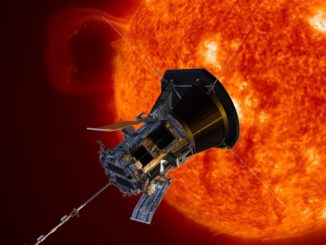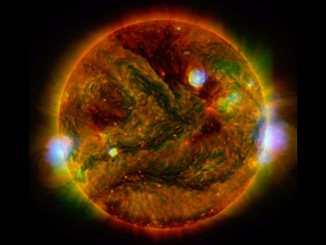
corona




NASA science during the 9 March total solar eclipse
As the Moon slowly covers the face of the Sun on the morning of 9 March, a team of NASA scientists in Indonesia will be anxiously awaiting the start of totality. They plan to take 59 exposures of the Sun in just over three minutes, capturing data on the corona — the innermost parts of the Sun’s volatile, superhot atmosphere.

Visualising the 9 March total solar eclipse
The total solar eclipse of Wednesday, 9 March 2016 is of relatively long duration — 4m 9s at greatest eclipse — which occurs at 1:57 UT. Totality is visible from Sumatra, Borneo, Sulawesi and the North Pacific Ocean, while the partial phases can be seen from East Asia, Australia and the Pacific Ocean. See the event unfold in these new NASA timelapse visualisations.

Understanding the magnetic Sun
The Sun’s magnetic field is responsible for everything from the solar explosions that cause space weather on Earth — such as aurorae — to the interplanetary magnetic field and radiation through which our spacecraft journeying around the solar system must travel. But even now, scientists are not sure exactly where in the Sun the magnetic field is created.

Black hole Markarian 335 has major flare
The baffling and strange behaviours of black holes have become somewhat less mysterious recently, with new observations from NASA’s Explorer missions Swift and the Nuclear Spectroscopic Telescope Array, or NuSTAR. The two space telescopes caught a supermassive black hole known as Mrk 335 in the midst of a giant eruption of X-ray light.

Comet’s tail may shed light on solar wind heating
We can’t see the wind, but we can learn about it by observing things that are being blown about. And by studying changes in a comet’s bright tail of gas and ions, scientists are on the trail to solving two big mysteries about the solar wind — the supersonic outflow of electrically charged gas from the Sun’s million-degree upper atmosphere, or corona.

Royal Astronomical Society’s National Astronomy Meeting 2015 – report 3
In his third report from the Royal Astronomical Society’s NAM2015, Kulvinder Singh Chadha examines the Sun in X-ray and ultraviolet wavelengths from three different spacecraft, dons a virtual reality planetarium headset, and investigates if the proposed James Webb Space Telescope (JWST) could discern Earth-sized worlds that are habitable.
